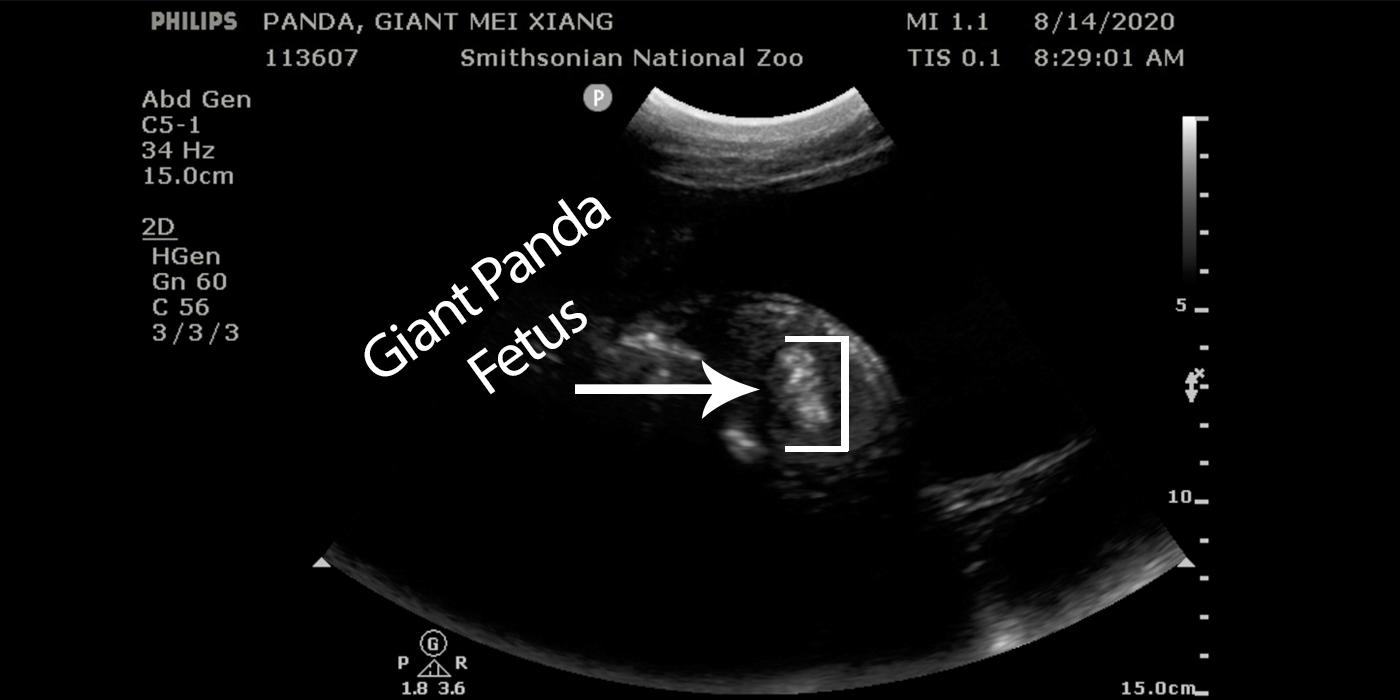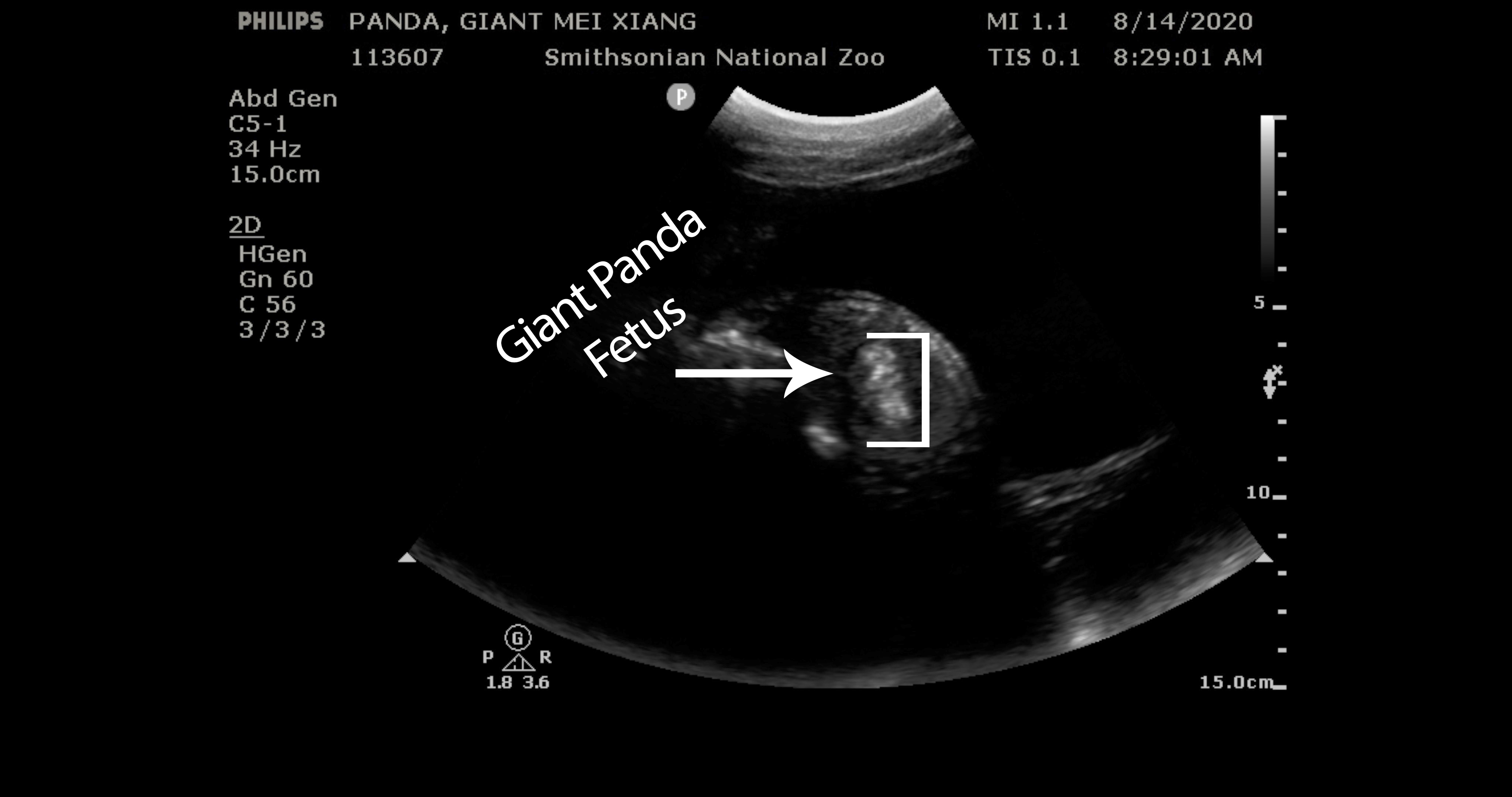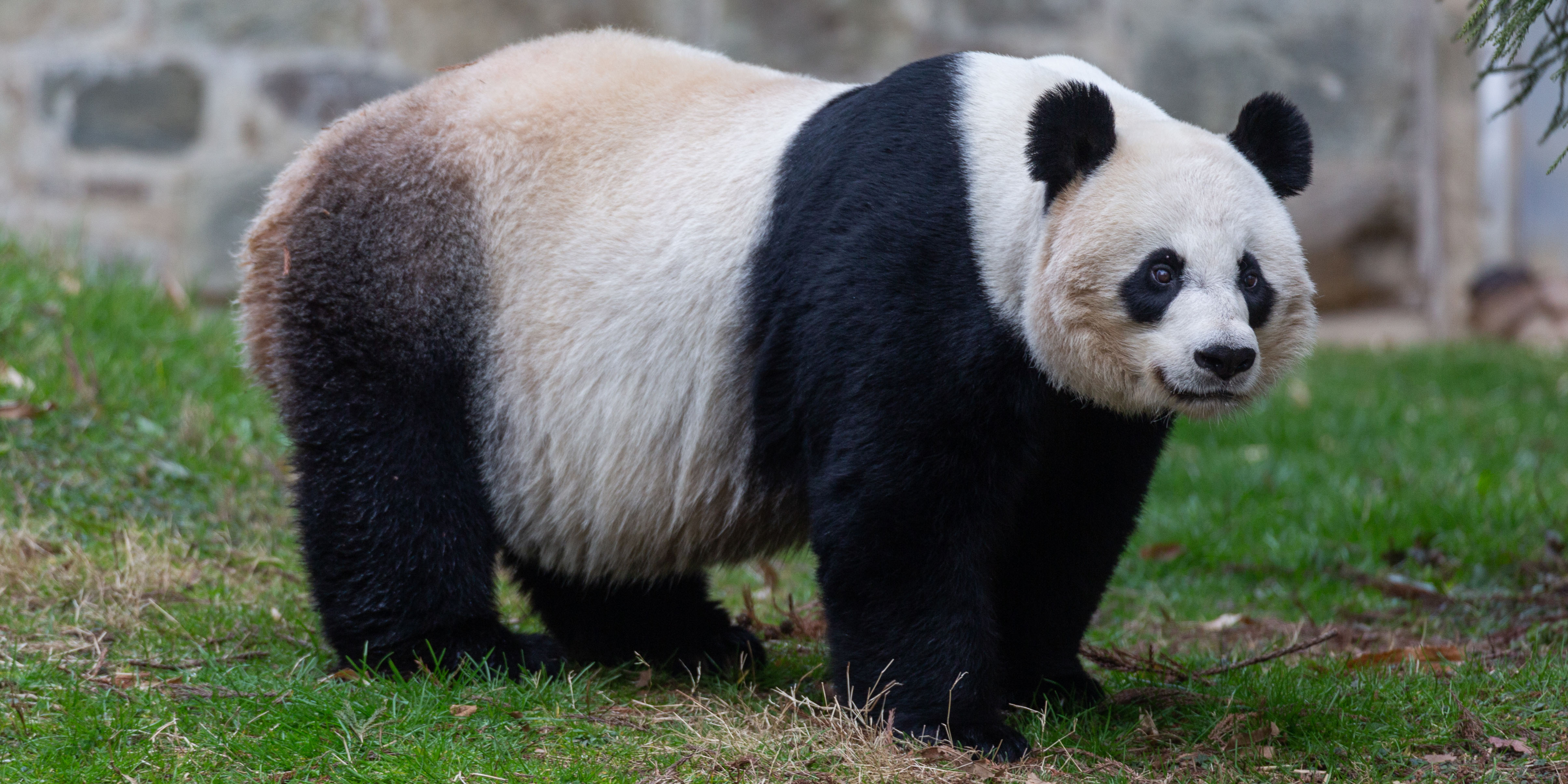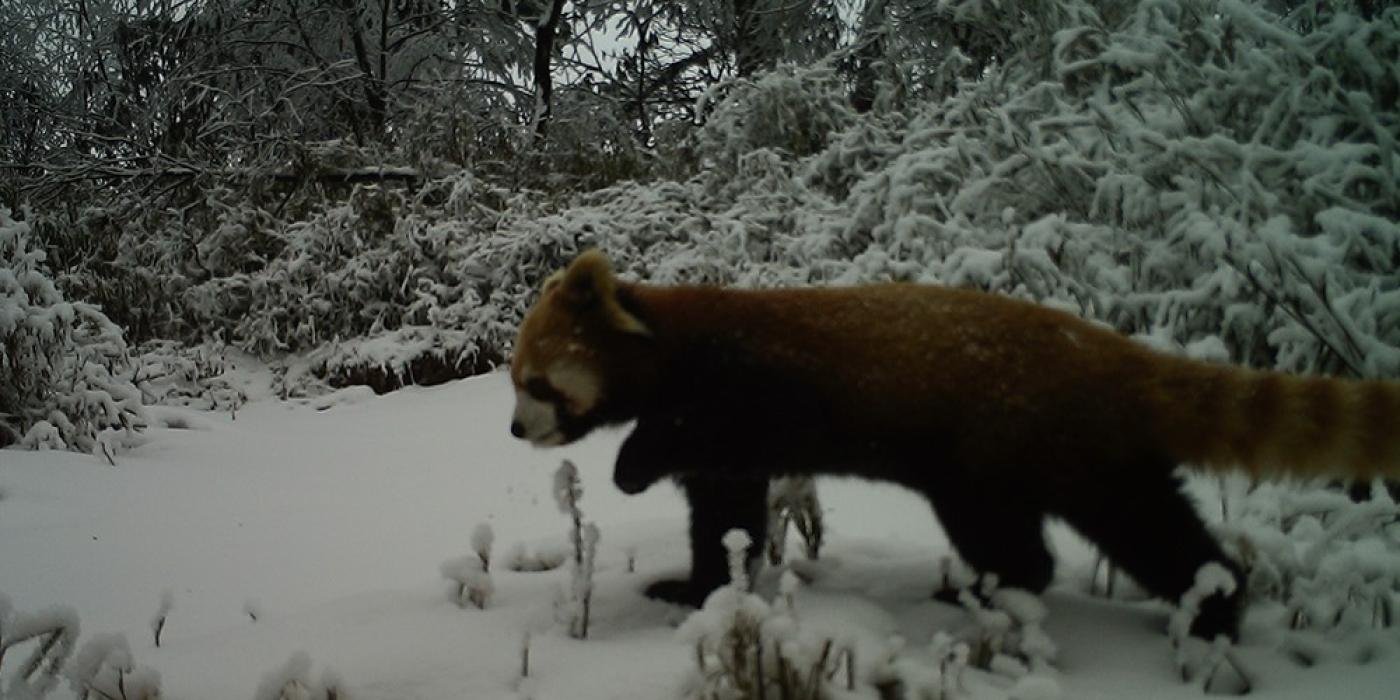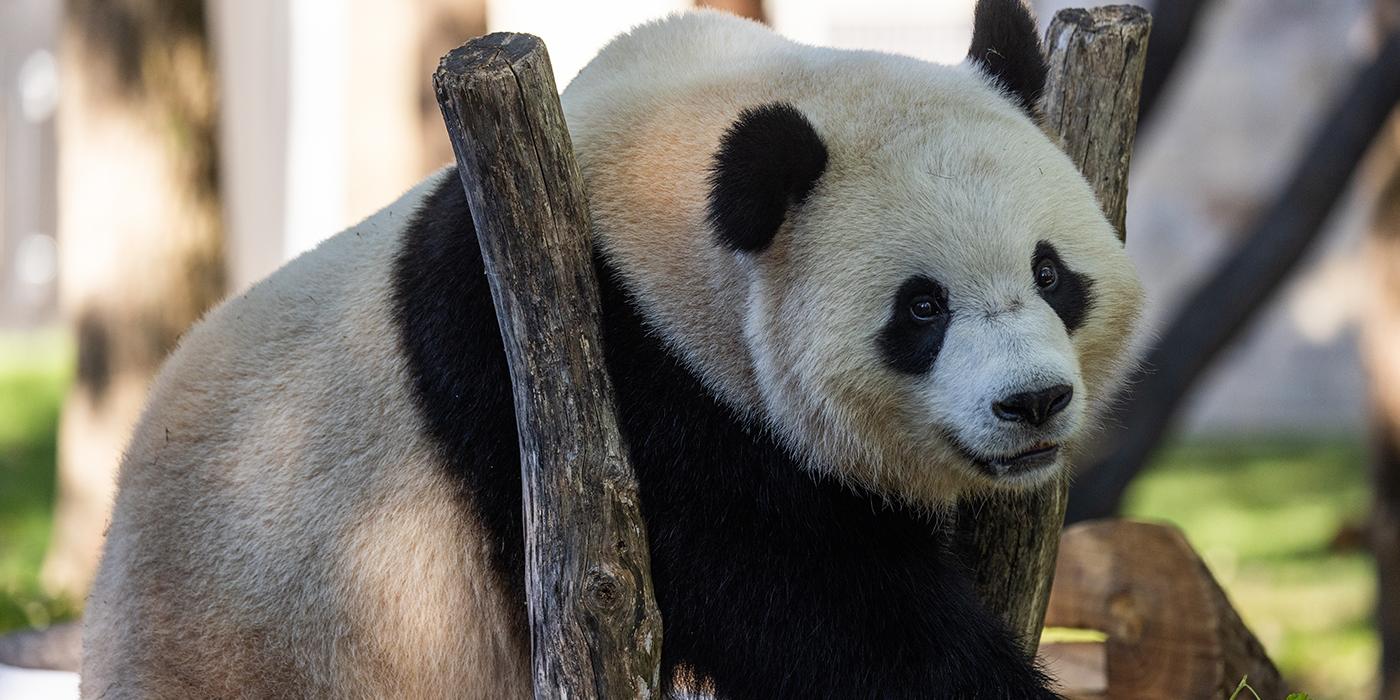Veterinarians Find Fetal Tissue on Giant Panda Ultrasound
Veterinarians at the Smithsonian’s National Zoo detected tissue consistent with fetal development during giant panda Mei Xiang’s (may-SHONG) ultrasound this morning, Aug. 14. It is too early to determine if the tissue is a completely viable developing fetus as there is the potential that the fetus could be resorbed. If the fetal tissue continues to develop, veterinarians estimate that Mei Xiang could give birth within the next few days. Veterinarians first detected fetal tissue last week, and they have since noted developing skeletal structure and strong blood flow within Mei Xiang’s uterus. If the fetal tissue resorbs, her hormones will return to baseline levels and her behavior will return to normal.
There is a substantial possibility that Mei Xiang could resorb or miscarry a fetus. Scientists do not fully understand why some mammals resorb fetuses.
“In the middle of a pandemic, this is a joyful moment we can all get excited about,” said Don Neiffer, chief veterinarian at the Smithsonian’s National Zoo who conducted the ultrasound. “We are optimistic that very shortly she may give birth to a healthy cub or cubs. We’re fortunate that Mei Xiang participated in the ultrasound allowing us to get sharp images and video. We’re watching her closely and welcome everyone to watch with us on the panda cams.”
Unlike humans, giant pandas experience a phenomenon referred to as delayed implantation. After fertilization, an embryo will not attach to the uterine wall until weeks or months later. It is not clear what causes the embryo to implant into the uterine wall. After implantation, the embryo grows exponentially. Veterinarians and the giant panda team have been conducting regular ultrasounds on Mei Xiang since July to track changes in her reproductive tract.
Reproductive scientists from the Smithsonian Conservation Biology Institute (SCBI) and Zoo veterinarians performed an artificial insemination on Mei Xiang March 22 with frozen semen collected from Tian Tian (tee-YEN tee-YEN). Mei Xiang turned 22 years old July 22. Tian Tian will turn 23 Aug. 27.
SCBI scientists confirmed that a secondary rise in Mei Xiang’s urinary progesterone levels began June 10. In late July, Mei Xiang exhibited behaviors consistent with pregnancy or pseudopregnancy. Now, she is sleeping more, eating less, nest-building and has been observed body licking. The panda team will continue to observe her closely.
The panda house at the David M. Rubenstein Family Giant Panda Habitat is currently closed to provide quiet for Mei Xiang. The panda team started 24-hour-a-day behavior watch on the panda cams August 14. As a public health precaution due to COVID-19, the Smithsonian’s National Zoo and Conservation Biology Institute has updated its hours and entry requirements.
Mei Xiang has given birth to three surviving cubs: Tai Shan (tie-SHON), Bao Bao (BOW BOW) and Bei Bei (BAY BAY). Tai Shan was born July 9, 2005, and he now lives in China. Bao Bao was born Aug. 23, 2013, and moved to the China in February 2017. Bei Bei was born on Aug. 22, 2015 and moved to China in November 2019. As part of the Zoo’s cooperative breeding agreement with the China Wildlife Conservation Association, all cubs born at the Zoo move to China when they are 4 years old. The Zoo’s current cooperative breeding agreement expires in December 2020.
The Zoo will continue to provide updates on Mei Xiang through Facebook, Twitter and Instagram using #PandaStory, and the Giant Panda e-newsletter.
Related Species:
Image Gallery



